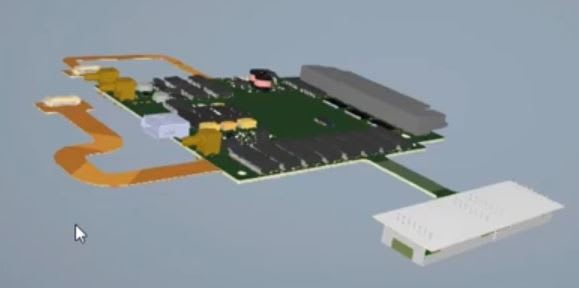How OrCAD X Enables Rigid Flex PCB Applications
Key Takeaways
-
Rigid flex PCBs are integral in the medical (e.g., pacemakers, imaging equipment), military (e.g., weapon guidance systems), aerospace (e.g., radar equipment), and automotive industries.
-
These PCBs excel in environments requiring dynamic flexing, high vibration resistance, and operation in compact or irregular spaces.
-
OrCAD X enhances the design process with features like 3D visualization, MCAD-ECAD integration, and design rule checks, which are crucial for managing complex designs.

Rigid-flex PCB made in OrCAD X
Due to their adaptability and durability, rigid flex PCBs play a large role in technology across various industries. We’ll discuss rigid flex PCB applications in two distinct sections: industry-specific uses and capabilities-based applications. This format highlights how these boards enhance performance in challenging environments and accommodate operational needs.
We will delve into the specific capabilities of rigid flex PCBs that make them well-suited for dynamic applications, high-vibration settings, and compact spaces. Finally, we will discuss how OrCAD X facilitates the development of these complex systems with tools tailored for flexible and rigid-flex PCB design.
Rigid Flex PCB Applications by Industry
|
Industry Type |
Applications |
|
Medical Industry |
|
|
Military Manufacturing |
|
|
Aerospace Industry |
|
|
Telecommunication Industry |
|
|
Automotive Industry |
|
|
Industrial / Manufacturing Industry |
|
|
Consumer Appliances |
|
As you can see from the table, rigid flex PCBs are present in nearly every major industry and power some of our most-used technology. Their adaptability and durability make them highly desirable, flexible PCBs suitable for a wide variety of uses.
Capabilities-Based Applications of Rigid Flex PCBs
|
Capability Type |
Applications |
|
Dynamic Flexing |
|
|
Flex-to-Install |
|
|
High Vibration Environments |
|
|
High Current and Heat |
|
|
Small or Irregular Spaces |
|
|
High-Reliability Needs |
|
|
Flexible Connections |
|

PCB Designed in OrCAD X With a Flexible Connector
How OrCAD X Supports Rigid-Flex PCB Development
|
OrCAD X Capability |
Description |
Applications |
|
OrCAD X's enhanced 3D engine helps visualize the placement and fit of components in complex rigid-flex designs. This is critical for applications in small or irregular spaces. |
|
|
|
This integration enables better coordination between mechanical and electronic design teams, crucial for high-reliability needs in various industries. It helps ensure that the PCB design meets mechanical constraints and operational requirements, reducing rework and ensuring reliability. |
|
|
|
Manipulation According to Material Flexure and Bend Radii |
OrCAD X allows designers to adjust 3D assemblies based on material flexibility and bend radii. This capability is specifically valuable for dynamic flexing applications. |
|
|
The ability to clearly define and configure cross-sections for different zones of the PCB (rigid and flex) is required for applications involving flexible connections and flex-to-install scenarios. This feature ensures that different parts of the PCB behave as expected under operational conditions. |
|
|
|
Design Rule Checks (DRC) for Rigid-Flex Designs |
Setting specific constraints and DRCs for rigid-flex designs helps prevent issues during manufacturing. This is useful for industries requiring high precision and adherence to specifications. |
|
|
Interactive 3D Adjustments and Collision Detection |
Being able to adjust designs in real-time and check for collisions in a 3D space helps designers optimize layouts for all applications mentioned. This is especially beneficial in dense packaging, where space is at a premium and all components must fit precisely. |
|
|
Export 3D Data for External Analysis |
The capability to export 3D data for further analysis helps in the verification and validation process (which is crucial for all applications) to ensure designs meet the necessary standards and functionalities before going into production. |
|
To explore the full potential of OrCAD X for rigid flex PCB applications, sign up for a free trial. This trial allows firsthand experience with specialized features like 3D visualization and MCAD-ECAD integration, which is essential for rigid flex design.
Leading electronics providers rely on Cadence products to optimize power, space, and energy needs for a wide variety of market applications. To learn more about our innovative solutions, talk to our team of experts or subscribe to our YouTube channel.